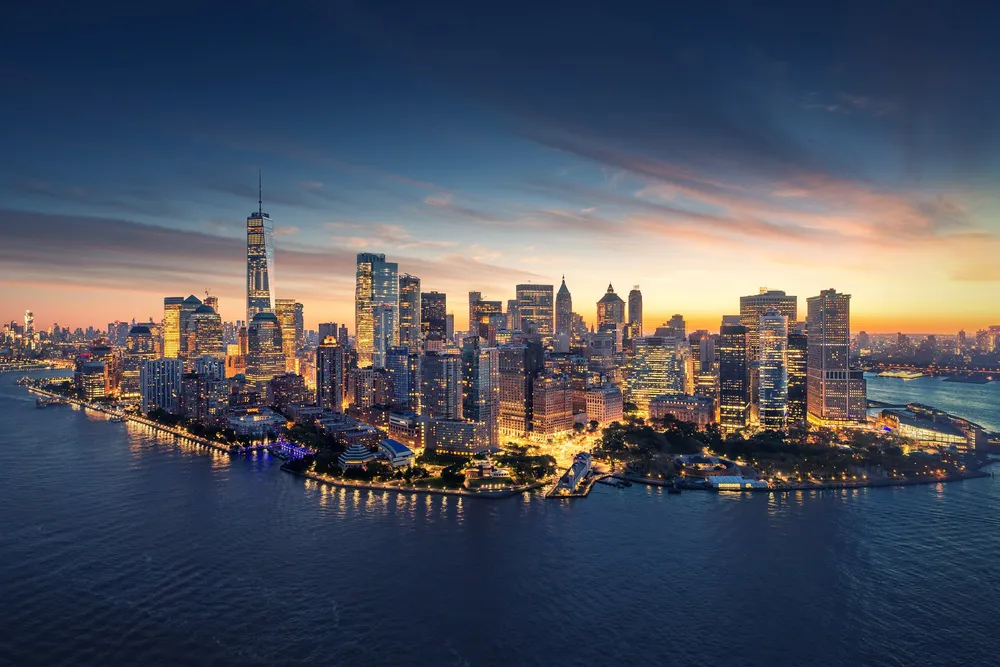Trump's Empire Wind price? New York's controversial gas pipeline is back
Although no one-for-one trade has been confirmed, developer's move aligns with Administration’s fossil fuel agenda

Developer Williams Companies has confirmed it is restarting its moribund Constitution Pipeline to bring gas from Pennsylvania’s Marcellus shale field to New York, less than two weeks after the Trump administration lifted its stop-work order on Equinor's Empire Wind.
The move stokes speculation that President Donald Trump's Empire halt and sudden reversal were part of a behind-the-scenes trade of “offshore wind leniency for pipeline permit approvals”, according to research consultancy ClearView Energy Partners.
This view has not been confirmed by either the Trump administration or New York governor Kathy Hochul’s office.
Constitution revived
Williams Companies first proposed the 124 mile (200km) pipeline in 2012 to transport natural gas from Susquehanna County in Pennsylvania to Schoharie County in central New York, where it would connect with interstate pipelines to serve the energy-starved Northeast.
The project was abandoned in 2020 after New York regulators declined to issue needed clean water permits.
Williams’ shorter Northeast Supply Enhancement (NESE) to the Borough of Queens, New York City, is likewise being revived after similarly falling victim to state permitting agencies.
Constitution’s revival and Empire’s resumption reflect New York’s twin challenges of state-mandated decarbonisation and surging power demand.
New York needs power from somewhere
New York Independent System Operator (NYISO) estimates that demand in the state will rise by 5% by 2030 to reach 150,000GWh, as electrification and reindustrialisation progress.
Several major industrial projects have started or are slated to break ground this year, most notably Boise, Idaho-based Micron Technologies’ $100bn manufacturing complex near Syracuse that could consume some 11% of the state’s total power load.
General Motors is likewise adding capacity to an engine plant near Buffalo, while Chobani Yogurt has already commenced construction on its $1.2bn plant in Rome, New York.
“We certainly are going to have to build generation. That is something we already had been planning for as part of our advancement of electrification of buildings and transportation,” she added.
Nyserda is overseeing New York's energy transition, including its mandated 70% clean power grid by 2030 and 9GW by 2035 offshore wind goal.
This offshore wind goal was largely derailed by rising costs and supply chain turmoil even before Trump regained the presidency and will almost certainly be delayed as developers sideline or abandon US projects due to political risk.
Along with Empire, the state hosts Orsted’s operating 132MW South Fork as well as its 920MW Sunrise array that is expected to begin construction later this year.
To what extent future power supply will be natural gas-fired is an open question. Natural gas already supplies around 46% of the state’s power need and is amply supplied – for now, Harris said.
“We don't have gas constraints in the state per se, but we certainly plan for our gas needs as well as our electric needs,” she said.
The state energy plan planning process is underway, Harris said. It is looking at “scenarios where we need less gas because we have more electrification, but there's also scenarios where we need more gas because of the overall demand on the system and perhaps some delays in the electrification.”
New York generates some 22% from ample hydropower resources and a similar amount from nuclear.
“The diversity of our energy resources is quite valuable, because we have many resources upon which to rely to preserve reliability,” Harris added.
(Copyright)